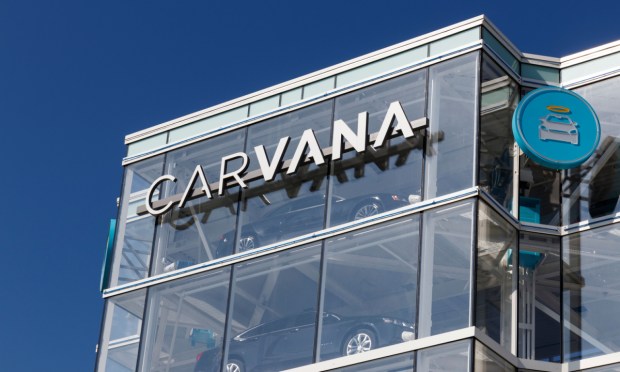Carvana’s Inventory Down 50% YOY as It Aligns With Sales Volumes

Used car retailer Carvana is putting some miles between itself and the post-pandemic cratering of used car sales with what it sees as smoother pricing and inventory road conditions ahead.
On a Q2 earnings call Wednesday (July 19), Carvana founder and CEO Ernie Garcia said, “18 months ago, we were positioned aggressively for growth. We were then hit with a combination of macroeconomic, industry, operational, and capital markets impacts that, when combined, put us under considerable pressure and demanded a reprioritization of our efforts. So that’s what we did.”
Executing against a three-step plan to drive topline revenue, improve unit economics, and return to growth after several quarters of shrinking sales of used cars that hit new car prices in 2022, Carvana has given itself much-needed room to maneuver by rationalizing expenses, negotiating down debt, and focusing on needs of a used car market in transition.
Garcia added, “Today the company is functioning better than it ever has. We’re more efficient and we’re improving at a faster pace than we ever have in the past. This improvement spans the entire business from customer-facing improvements including the early testing of same-day delivery in a subset of markets that have inspection centers, to product improvements that enable us to buy more cars from our customers more efficiently, to process changes and developments that are making us more efficient across every operating group in the company.”
Carvana CFO Mark Jenkins said retail units sold in Q2 totaled 76,530 for a decrease of 35% year over year and 3% sequentially.
Jenkins noted, “Similar to past quarters, our declining retail units sold, which we expected, was driven by four primary factors: reduced inventory size, reduce advertising, increased benchmark interest rates and credit spreads, and a continued focus on executing our profitability initiatives.”
During a Q&A with analysts, Jenkins added that “inventory is down year over year by over 50% — most recently on the order of 55% — and it was down again quarter over quarter. We’ve really been pushing that down in an effort to align our inventory size with sales volumes.”
According to a shareholder letter, Carvana reduced inventory by 12% sequentially and 55% year over year (YoY), increased advertising spend by 2% sequentially and reduced it by 56% YoY. Interest rates in the quarter increased sequentially and continued to be up significantly YoY. It said, “All of these factors create a headwind to retail units sold volume, other things being equal.”
The used car market is being pummeled by a combination of factors from diminishing availability to high borrowing costs that have soared since last year. A major consideration with used cars is depreciation. Responding to an analyst, Garcia said, “Probably best-case scenario for our business would be pretty significant depreciation that is foreseen. I think foreseen depreciation enables the market … to buy cars at sufficiently high margins to where you can absorb that depreciation and it doesn’t impact the business in a material way.”
As PYMNTS reported at the start of this year, “While the price of gas has receded well off its previous highs, having the actual vehicle has become more expensive than has been seen in years. As with many other forms of debt, auto loans are pricier than they have been in decades. More than 15% of car buyers had a monthly payment of at least $1,000 in the fourth quarter of 2022, according to Edmunds. That tally was 10.5% in the fourth quarter of the previous year.”

